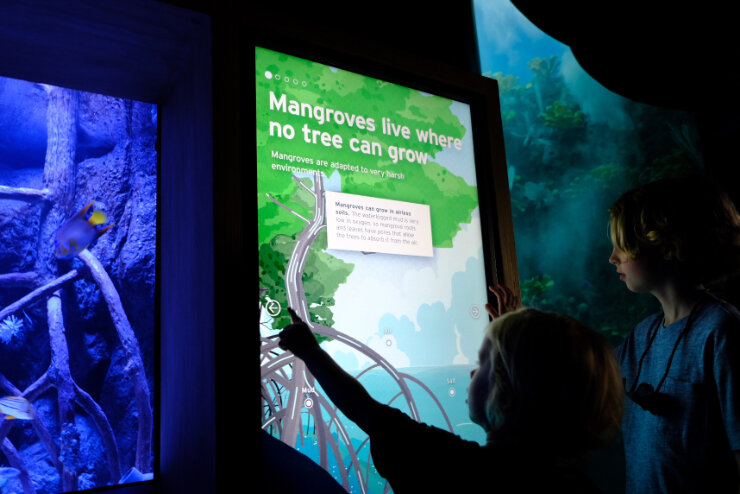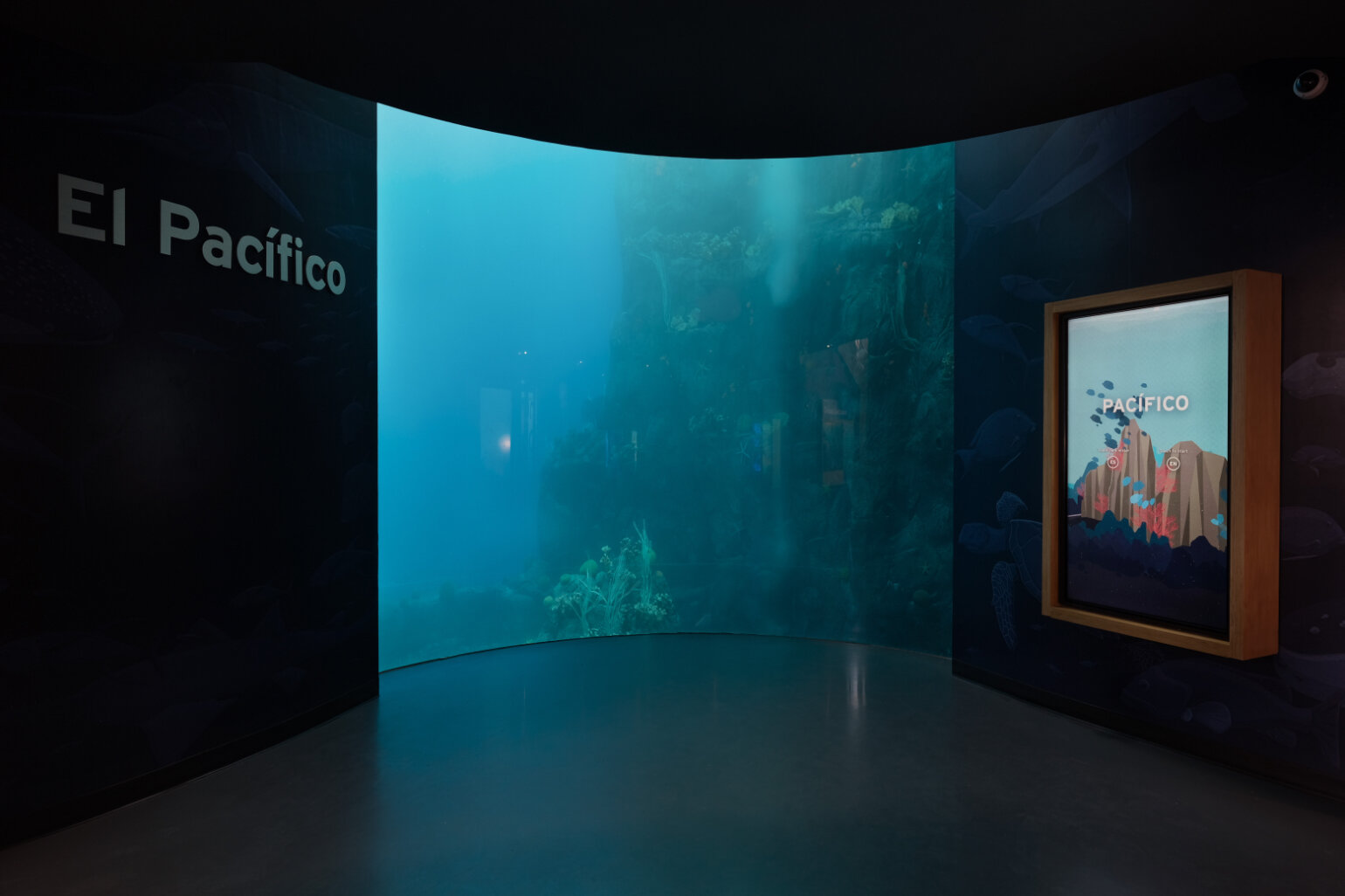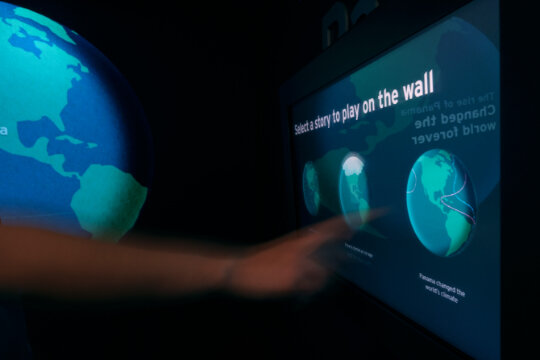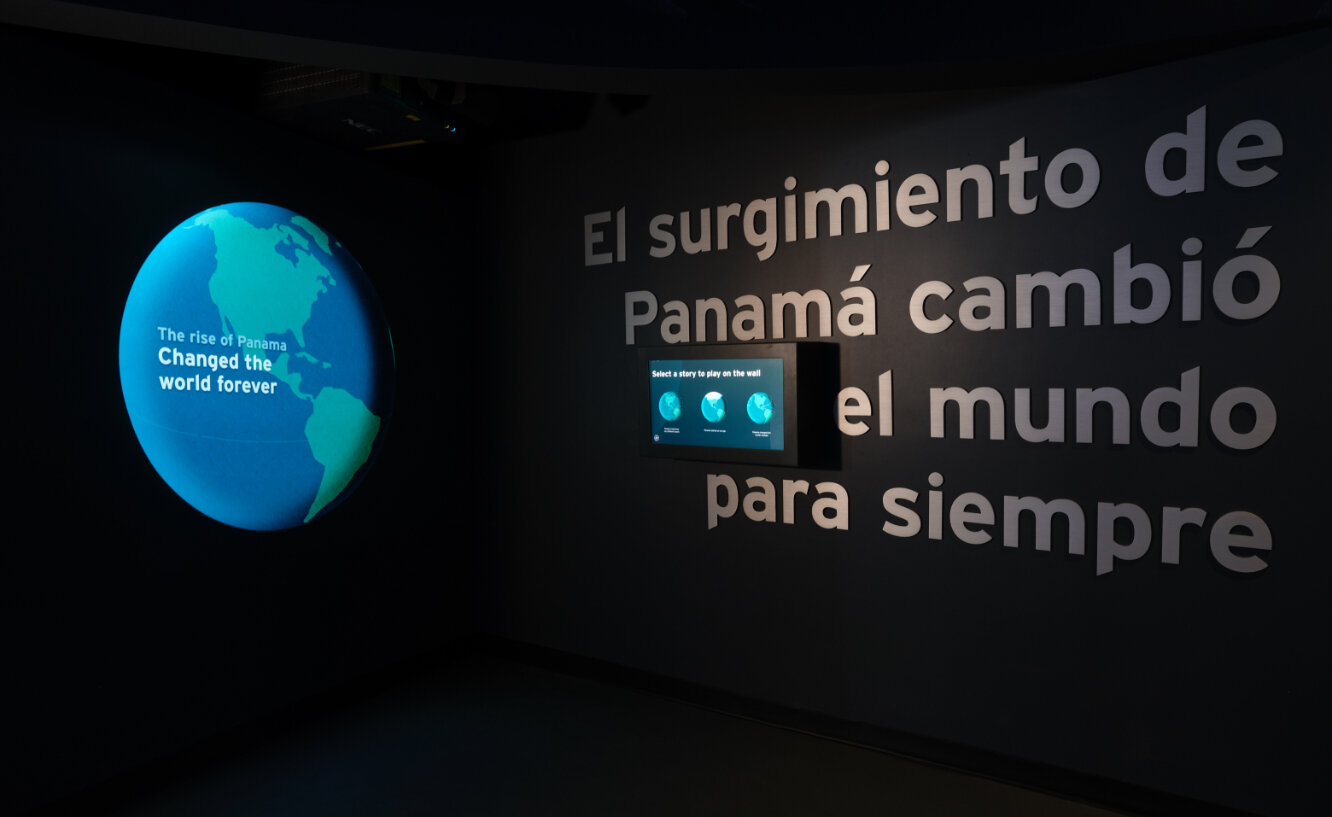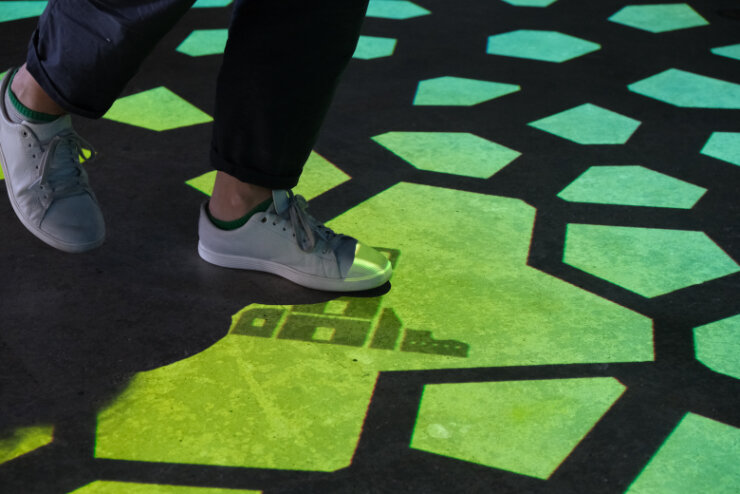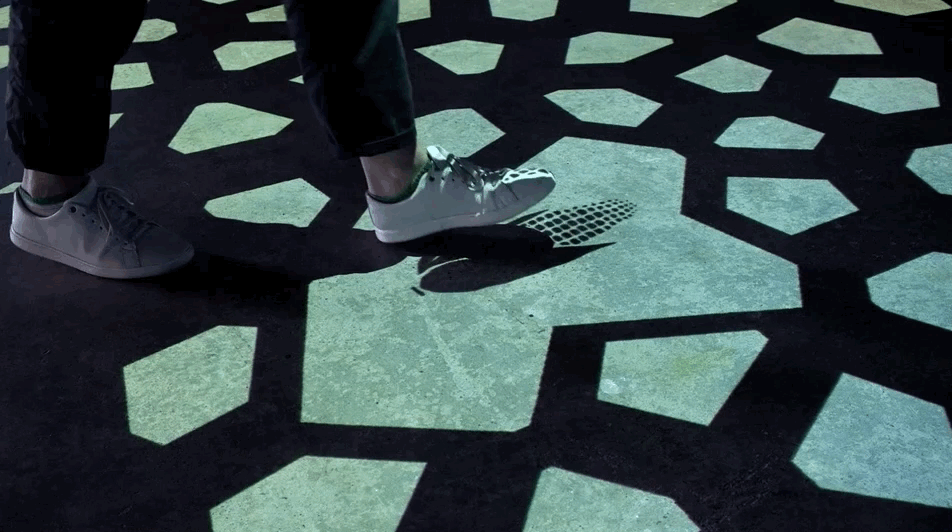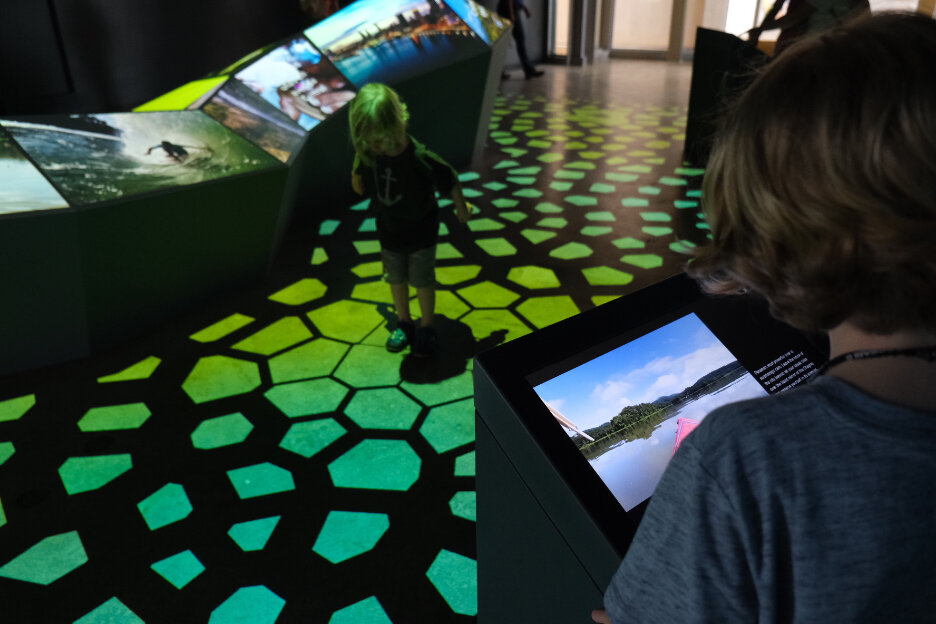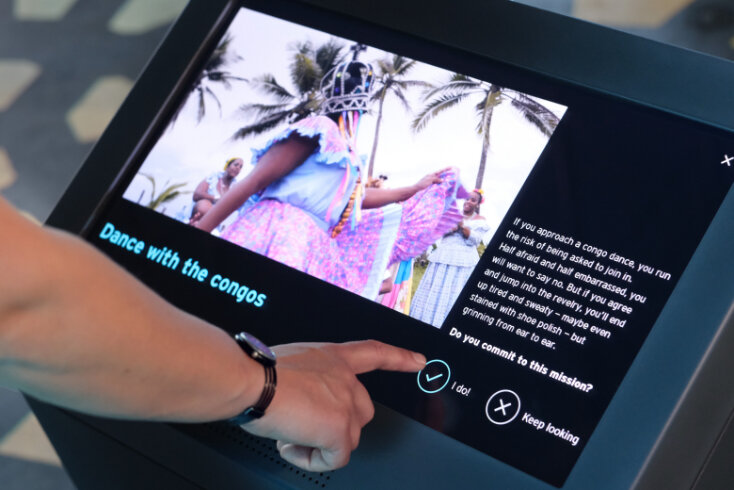Biomuseo — Museum of Biodiversity, Panama (Tellart, 2018)
The Frank Gehry-designed Biomuseo is a museum that highlights the natural history of Panama, from its native flora and fauna to its formation as an isthmus 3 million years ago. The museum approached Tellart to design the interactive elements for three of their galleries, and we took that opportunity to tell the museum’s story of biodiversity through an engaging and immersive experience.
On this project, I served as a Creative Technologist during our Discovery, R&D, and Production phases. I’d like to make entirely clear though that I did not stay with the team through the end of their production and installation phases, as they overlapped with my project for the de Young Museum. The core Tellart team that worked on this project above and beyond my own involvement consisted of Zaza Zuilhof, Jack Lenk, Jesus Garcia Galvez, James Smalls, and Epic Jefferson. Below, I will detail the two galleries that I supported from the technical end, both software and hardware.
Oceans Divided
Software Prototyping and Development
Oceans Divided tells the story of the oceans that border Panama on either side and the differences between the two. Interactive informational displays sit next to live aquatic tanks, encouraging visitors to look beyond what they see at first glance. My main contribution to this gallery was in the software development for the content on the displays. For this project, I created the base navigational system, the touchscreen gestures, and a few foundational utilities.
Panama is the Museum
Hardware R&D and Prototyping
Software Prototyping and Development
Panama is the Museum concludes the visitors’ journey through the museum with a full-floor interactive projection of a breathing Voronoi pattern. The gallery lets visitors know what types of experiences they can expect once they leave the museum and venture out to explore the beauty of Panama. On the hardware end, I researched 10-12 different IR-depth and stereoscopic cameras and tested 5-6 of them in our studio. In the end, I helped spec the final camera (Hella Aglaia) and create a base-level prototype to detect people moving in a space. On the software end, I developed the prototype and final framework for the interactive control kiosks and their pushing of content to the central sculpture.



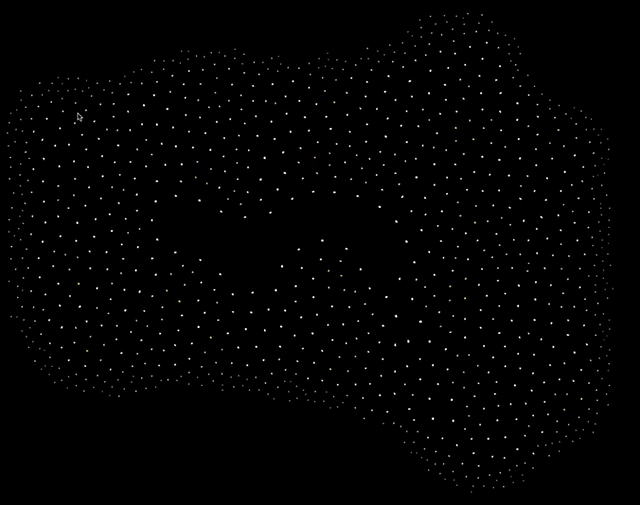
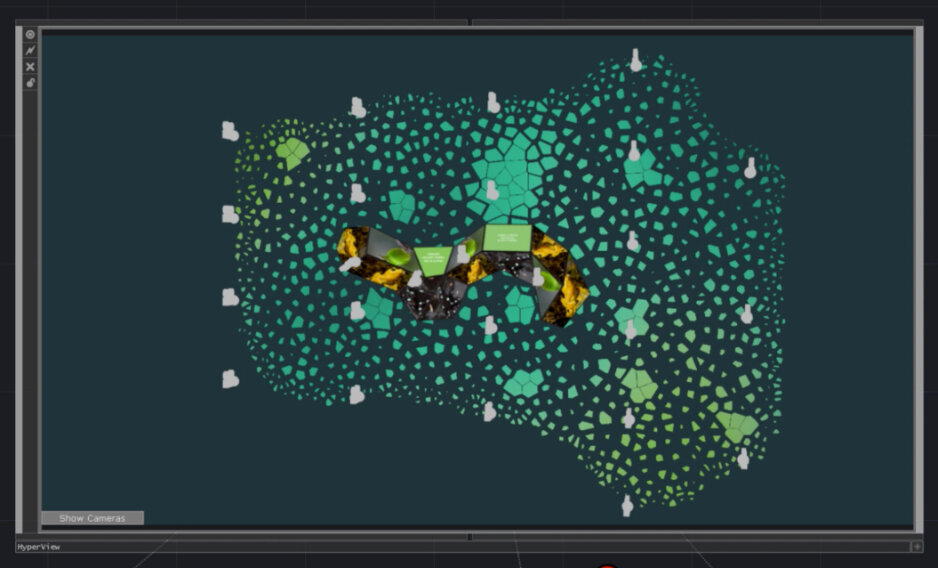
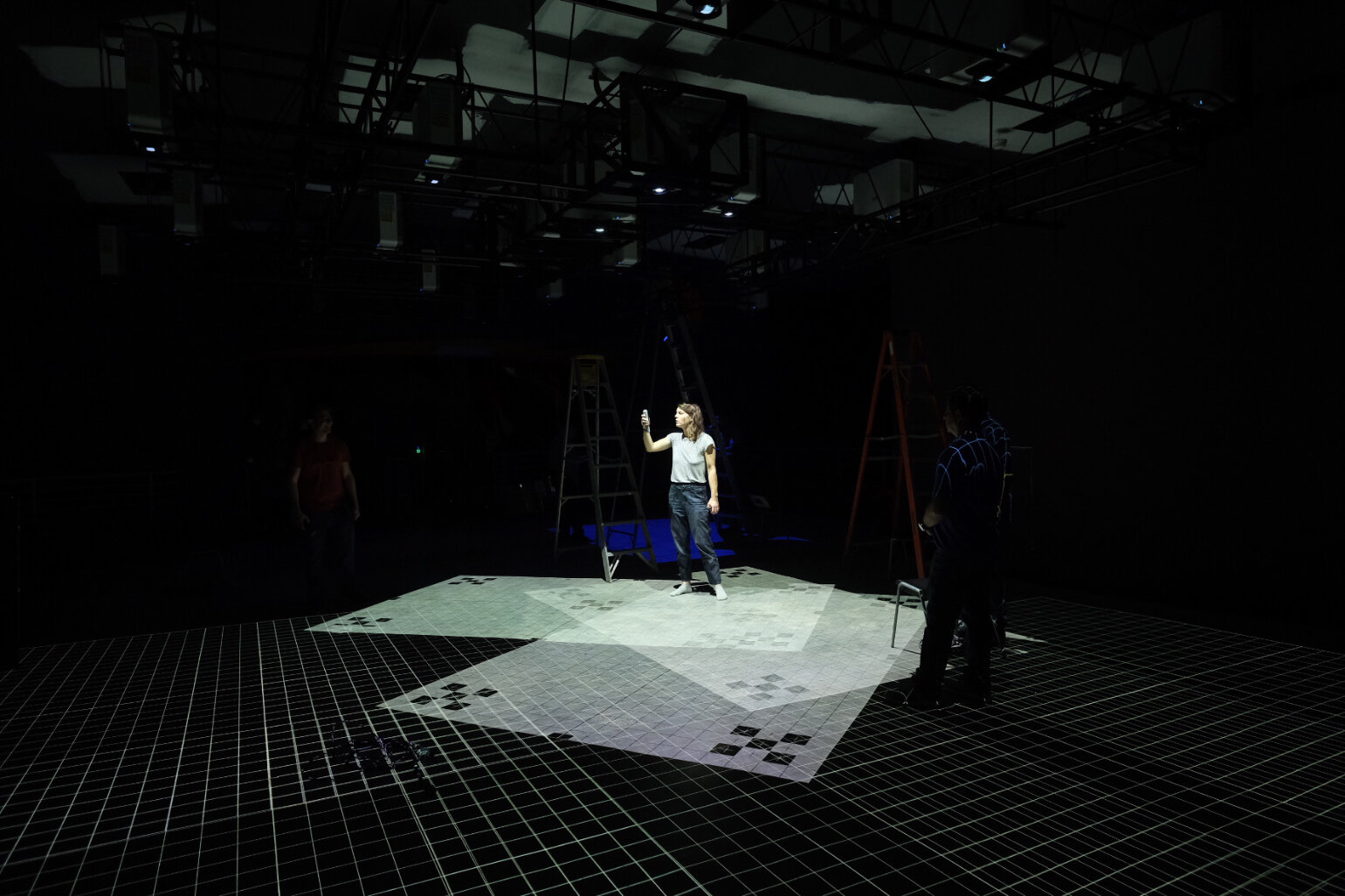
Partners that worked with Tellart to make this project happen included:
Kling Klang Klong: Sound design
David Carroll and Associates: Technical systems engineering, truss design/engineering
Madeline Verbica: Scientific illustration
Harvey Moon: Projection mapping



